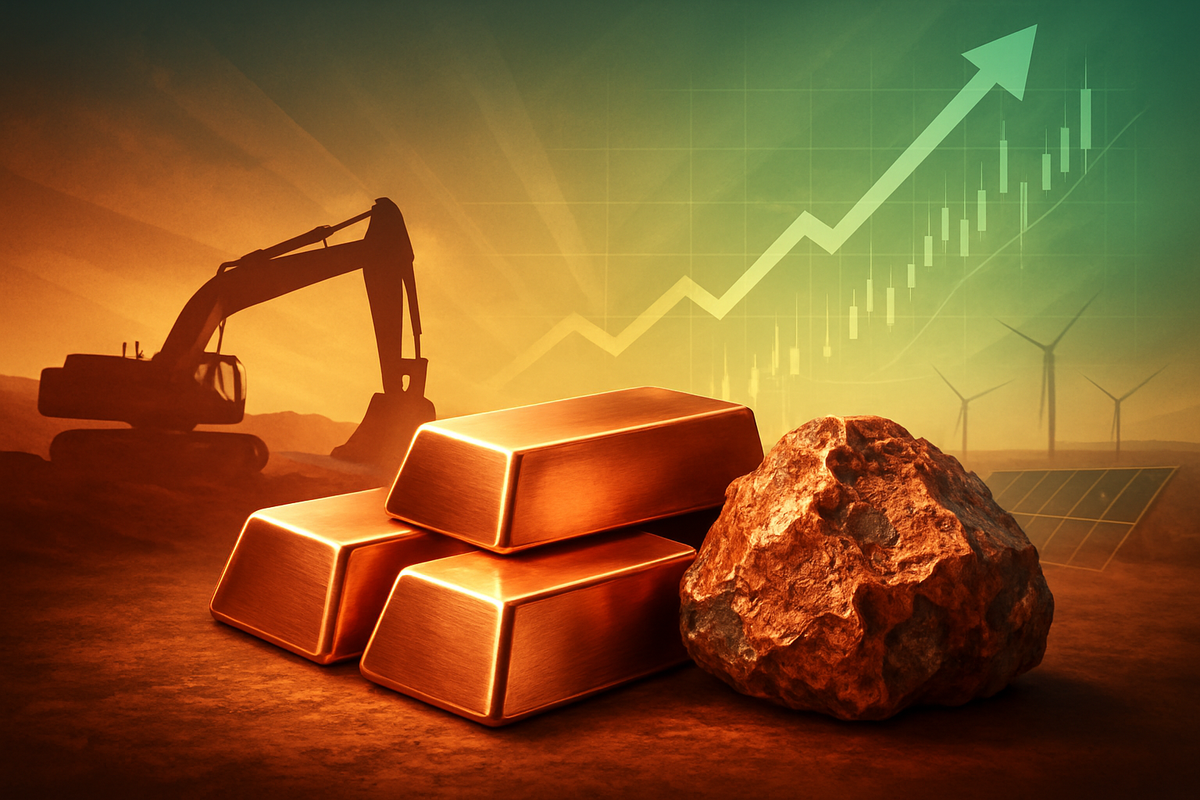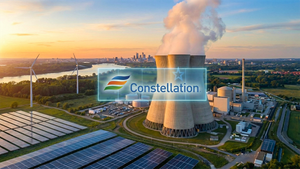
Sydney, Australia – November 11, 2025 – The global copper market is in the midst of an unprecedented surge, driven by the relentless march of electrification and the accelerating transition to green energy. This powerful confluence of factors has propelled copper prices to multi-year highs, creating a compelling landscape for investors, particularly within the Australian Securities Exchange (ASX) where a cohort of dedicated mining companies stands poised to capitalize on the burgeoning demand for the red metal. The immediate implication for the market is a sustained bullish outlook for copper, translating into enhanced earnings and strategic growth opportunities for producers, while simultaneously highlighting the critical importance of securing future supply in a world increasingly reliant on this essential industrial commodity.
The surge is not merely a transient price fluctuation but rather a structural shift underpinned by fundamental supply-demand imbalances. With Electric Vehicles (EVs) requiring significantly more copper than traditional cars and massive investments flowing into renewable energy infrastructure like wind and solar, demand is outstripping an already constrained supply. This dynamic is setting the stage for a period of sustained profitability and expansion for ASX-listed miners who have strategically positioned themselves with substantial copper assets, offering a vibrant avenue for investors seeking exposure to the global energy transition.
The Red Metal Rush: Drivers, Disruptions, and Market Reactions
The current rally in copper prices, seeing the metal climb to US$11,200 per tonne before settling around US$10,800 as of November 11, 2025 – a 27% increase since January – is fueled by a perfect storm of drivers and disruptions. At the forefront is the global electrification megatrend, encompassing the rapid adoption of electric vehicles, the build-out of vast renewable energy grids, and the burgeoning demand from Artificial Intelligence (AI) data centers, which are surprisingly copper-intensive for power and cooling. Each EV, for instance, demands 4-5 times more copper than its internal combustion counterpart, while wind and solar installations consume tonnes of copper per megawatt of capacity.
Compounding this escalating demand are significant supply constraints and disruptions. Major producing regions like Chile, Peru, and the Democratic Republic of Congo have faced operational issues, labor disputes, and stricter environmental regulations. Notably, the closure of the Cobre Panamá mine removed approximately 300,000 tonnes of annual production, while a significant mudslide at Freeport-McMoRan's Grasberg mine in Indonesia in September 2025 further deferred substantial output. These events, coupled with declining ore grades at existing mines and the lengthy 23-year average development timeline for new projects, have severely hampered the industry's ability to ramp up supply quickly. Global copper inventories remain critically low, exacerbating the supply squeeze.
Macroeconomic tailwinds are also playing a crucial role. Robust global economic growth, particularly in industrial nations, is driving demand in construction and manufacturing. China (Shanghai: 601857), as the world's largest consumer, continues to exert significant influence through its green energy expansion and infrastructure spending. Anticipated U.S. interest rate cuts into 2026 are expected to stimulate manufacturing, while a weaker U.S. dollar makes dollar-denominated copper more affordable internationally. The U.S. government's recent designation of copper as a critical mineral further underscores its strategic importance, attracting new capital flows into the sector. Initial market reactions have been overwhelmingly positive for copper-exposed equities, with forecasts from institutions like JPMorgan Chase suggesting prices could reach US$12,000 per tonne in Q1 2026.
ASX Miners: Riding the Copper Wave
The surging copper market presents a significant boon for ASX-listed mining companies with substantial exposure to the red metal. These companies are not only benefiting from higher commodity prices but are also attracting increased investor attention due to their strategic positioning in the global energy transition.
BHP Group Limited (ASX: BHP), a diversified mining behemoth, stands out as the world's largest copper producer. With major operations including Escondida in Chile (the world's largest copper mine) and Olympic Dam in South Australia, copper contributed a substantial 45% of BHP's underlying operating earnings (EBITDA) in FY25, up from 29% in FY24. This reflects a clear strategic pivot towards energy transition commodities. BHP's shares have already seen an 11.4% return over the past six months, trading at $42.79 as of November 11, 2025, demonstrating the market's positive response to its copper leverage.
Sandfire Resources Ltd (ASX: SFR) is often highlighted as the largest pure-play ASX copper share. With operations spanning Australia, Botswana (Motheo project), and Spain (MATSA project), Sandfire is directly exposed to copper's upward trajectory. The company's share price has surged an impressive 76% year-to-date to $16.34 as of November 11, 2025. Sandfire reported record revenues and a return to profitability with a net income of $143.99 million in FY25, driven by a 12% year-over-year increase in copper equivalent production to 152,000 tonnes, largely due to strong performance at its Motheo project.
Other significant players poised for gains include Rio Tinto Limited (ASX: RIO), another diversified major whose shares climbed following news of the Grasberg mine disruption, underscoring its copper sensitivity. Mid-tier producers like Aeris Resources (ASX: AIS), with its Tritton Copper Operations, have seen their share price rise by 146% year-to-date to 44 cents, reporting a $45 million net profit after tax (NPAT) turnaround in FY25. Similarly, Cyprium Metals Ltd (ASX: CYM), focused on its Nifty Copper Complex, and 29Metals (ASX: 29M), operating Golden Grove and Capricorn Copper, have seen share price increases of 68% and 32% respectively year-to-date, as they advance their copper projects. Even gold-focused Evolution Mining (ASX: EVN) has significantly increased its copper exposure through acquisitions, with copper now accounting for approximately a quarter of its revenue, delivering 76,000 tonnes of copper in FY25. These companies are direct beneficiaries of the sustained high copper prices, which are bolstering their revenues, profits, and capacity for future investment.
Broader Implications and Strategic Shifts
The surging copper market is not an isolated event but rather a critical indicator of profound shifts across global industries and economies. It underscores the accelerating pace of the global energy transition, positioning copper as a strategic critical mineral alongside lithium and nickel. This event fits squarely within the broader trend of commodity supercycles driven by decarbonization efforts, where the demand for raw materials essential for green technologies is outstripping traditional supply capabilities.
The ripple effects are extensive. Competitors in other industrial metals may find themselves vying for capital and attention, though the sheer scale of copper demand suggests a unique position. For partners in the renewable energy and EV sectors, the sustained high price of copper will inevitably translate into higher input costs, potentially impacting project economics and vehicle pricing. This could spur innovation in materials science to find substitutes or more efficient uses of copper, though widespread replacement remains challenging due to copper's unparalleled conductivity and durability.
Regulatory and policy implications are also significant. Governments, recognizing copper's strategic importance, are likely to implement policies aimed at securing domestic supply, streamlining permitting for new mines, and potentially offering incentives for exploration and development. The U.S. government's designation of copper as a critical input highlights this trend, potentially leading to trade policies that favor domestic production or specific alliances. Historically, similar surges in critical commodities have often led to increased geopolitical competition for resources and a renewed focus on supply chain resilience, echoing the oil shocks of past decades in terms of strategic importance. The current situation, however, is driven by a global consensus on climate action, giving it a unique long-term trajectory.
What Comes Next: Navigating the Copper Horizon
Looking ahead, the copper market is poised for continued dynamism, characterized by both significant opportunities and inherent challenges. In the short-term, sustained high prices are expected, with some analysts forecasting copper to hit US$12,000 per tonne in early 2026. This immediate bullish sentiment will likely fuel further investment in exploration and development, particularly for projects that can come online relatively quickly. However, the market will remain sensitive to macroeconomic shifts, such as global interest rate policies and the pace of economic recovery in major industrial nations, as well as potential trade policy developments like proposed tariffs on copper imports, which could introduce volatility.
Long-term possibilities for the copper market are even more compelling. The structural deficit is projected to widen significantly, with a deficit of 150,000 metric tons expected in 2026 and substantial structural deficits by 2035. This sustained imbalance points to a prolonged period of elevated prices, driving a strategic pivot for many diversified miners to increase their copper exposure. Companies will need to adapt by accelerating project development, exploring innovative mining techniques, and potentially engaging in more aggressive mergers and acquisitions (M&A) to secure future reserves. The strategic importance of copper will also likely lead to increased government involvement in securing supply chains, potentially through subsidies or strategic partnerships.
Market opportunities will emerge not only in direct mining but also in related sectors such as copper recycling, advanced processing technologies, and infrastructure development supporting new mines. Challenges will include navigating increasingly complex environmental and social governance (ESG) requirements, managing rising production costs, and addressing potential labor shortages in skilled mining roles. Potential scenarios range from a "supercycle" where prices remain robust for decades, driven by the green energy transition, to periods of consolidation and market rationalization as supply eventually catches up, though this is seen as a distant prospect given current demand projections. Investors should anticipate continued M&A activity as larger players seek to acquire junior explorers and developers to bolster their copper portfolios.
Conclusion: A New Era for the Red Metal
The surging copper market marks a pivotal moment for the global economy and the financial markets. The relentless demand driven by electrification, electric vehicles, renewable energy, and emerging AI infrastructure, coupled with persistent supply constraints and geopolitical complexities, has fundamentally reshaped copper's value proposition. It is no longer just an industrial metal but a critical enabler of the future economy, positioning it at the forefront of the commodities landscape.
For investors, the key takeaway is clear: copper is in a bullish phase with strong long-term fundamentals. ASX-listed mining companies, from diversified giants like BHP Group Limited (ASX: BHP) and Rio Tinto Limited (ASX: RIO) to pure-play specialists such as Sandfire Resources Ltd (ASX: SFR) and emerging producers like Aeris Resources (ASX: AIS) and Cyprium Metals Ltd (ASX: CYM), offer compelling investment opportunities. These companies are direct beneficiaries of higher copper prices, which are translating into enhanced earnings and the capital necessary for expansion.
Moving forward, the market will likely experience continued price volatility, but with a strong upward bias driven by the widening structural supply deficit. Investors should watch for further developments in global electrification policies, progress on new mining projects, and any significant shifts in macroeconomic conditions or trade policies that could impact supply chains. The long-term trajectory for copper appears robust, cementing its role as a cornerstone commodity for the 21st century and offering a compelling narrative for those looking to invest in the future of energy.
This content is intended for informational purposes only and is not financial advice





